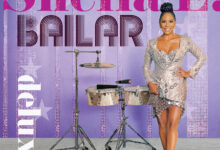UB Celebrates #HipHop50: The Impact of MC Hammer’s ‘Too Legit To Quit’
The Album Would Go On To Sell Over 5 Million Copies.
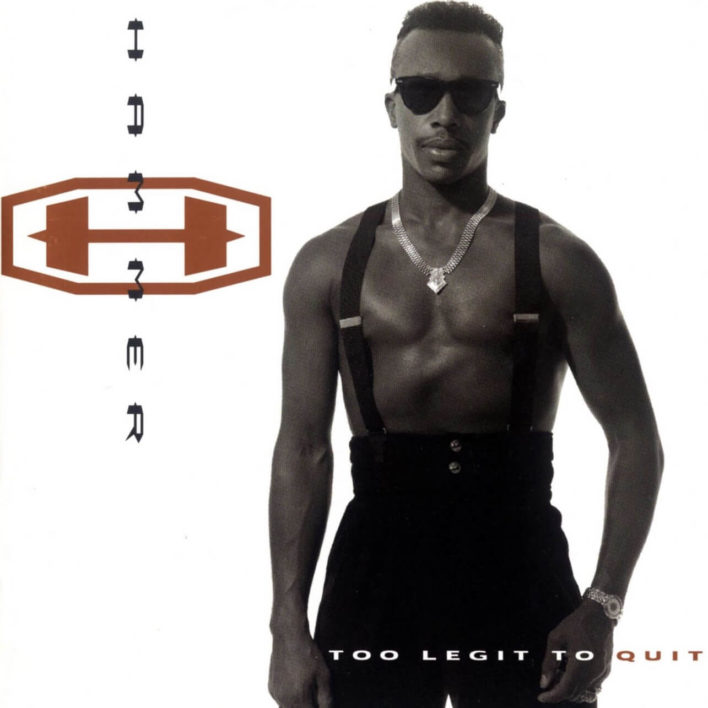
This week UB is Celebrating Hip Hop 50! Stay tuned for UB Hip Hop Features, Archived Interviews + New Interviews, Top Lists Countdowns and More!
To start this week, it was a no brainer on who to begin with. The pathbreaking MC Hammer, achieved something for Rap and Hip Hop that nobody had did before him, make his brand mainstream!
Yesterday his fourth album “Too Legit to Quit” celebrated it’s 32nd Anniversary, originally released October 29th, 1991.
“Please Hammer Don’t Hurt ‘Em” is the album that made him a house-hold name, “Too Legit to Quit” is the album he always wanted to make.
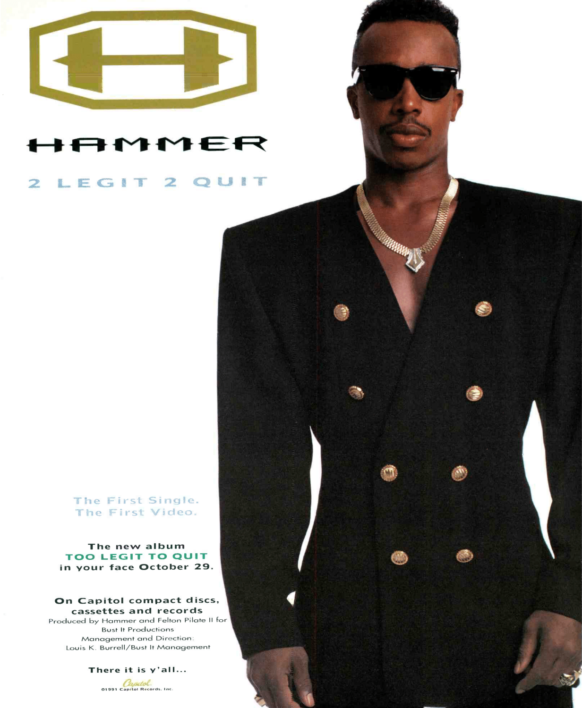
Born in northern California city of Oakland, Stanley Kirk Burrell known as MC Hammer, aspired to baseball fame as a youth, he diligently wrote poetry, starting at age 10 that would later come in handy — it was those catchy rhymes and verses that catapulted him to tie top with such great force.
MC Hammer‘s slick James Brown moves landed him the position of batboy/gofer for the Oakland A’s.
In 1986, MC Hammer released “Feel My Power” independently and sold it out of the back of his car and sold 60,000 copies. Hammer would sign with Capitol and Repackaged the album as “Let’s Get It Started” being released two years later in September of 1988. The album, earned him three Top 10 singles.
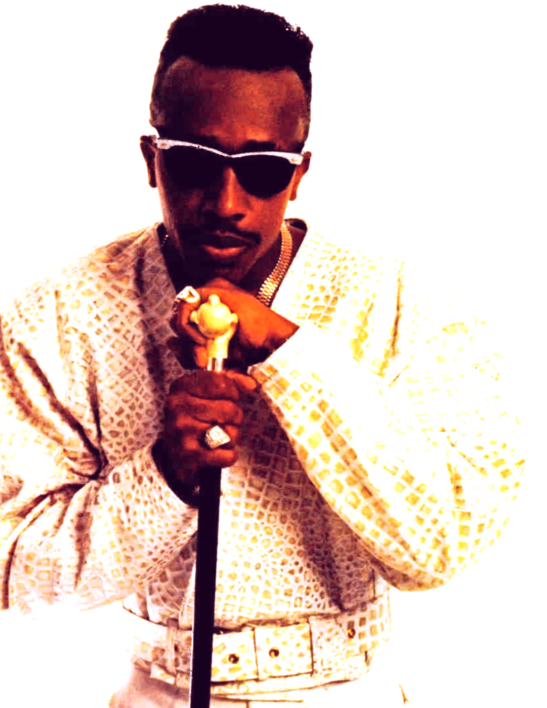
After an appearance on The Arsenio Hall Show, with multiple performances, MC Hammer rose to an even wider mainstream audience.
“Please Hammer Don’t Hurt ‘Em” his third album was released in February of 1990, would be his most commercial success! The album ranked #1 for 21 weeks on the Billboard Top 200, mainly to the success of “U Can’t Touch This.”
The album saw longevity on the Top R&B/Hip-Hop Albums chart, reaching #1 and staying at the top for 28 weeks. It was the top selling album of 1990 in the U.S. and one of the bestselling hip hop albums of all time.
During that time MC Hammer earned the reputation of a master entertainer, a shrewd businessman and a positive role model.
The writer/dancer/choreographer/producer and label executive of Bust It Records, style and distinction changed the face of rap and brought it into the pop mainstream.
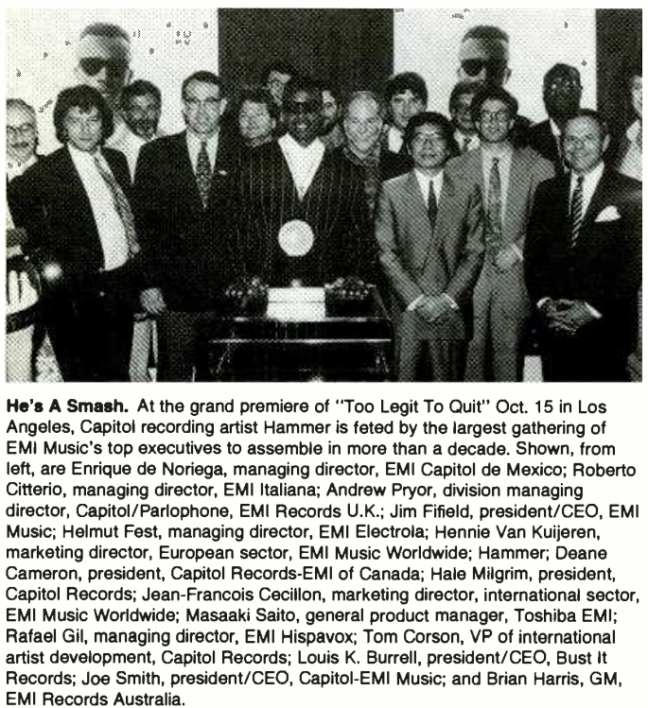
In October of 1991, Hammer‘s fourth album “Too Legit to Quit” was released. This was the first album, MC Hammer dropped the MC from his name.
Hammer stated dropping the M.C. from his name was an afterthought and was not necessarily designed to disassociate him from rap. Yet he added that, “it does take away a certain connotation that is associated with just being an ordinary everyday rapper, because Hammer is more about music and performance.”
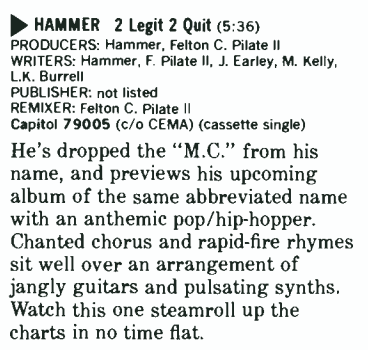
The album led with the title cut “2 Legit 2 Quit.” The video featured cameos by late great James Brown and several sports figures, including the Oakland A’s‘ Jose Canseco and the Detroit Pistons’ Isaiah Thomas, who demonstrate the “2 Legit 2 Quit” hand signals.
At that time MC Hammer‘s previous hits, “U Can’t Touch This” and “Pray,” relied heavily on samples from Rick James’ 1981 hit “Super Freak” and Prince’s 1984 smash “When Doves Cry,” respectively.
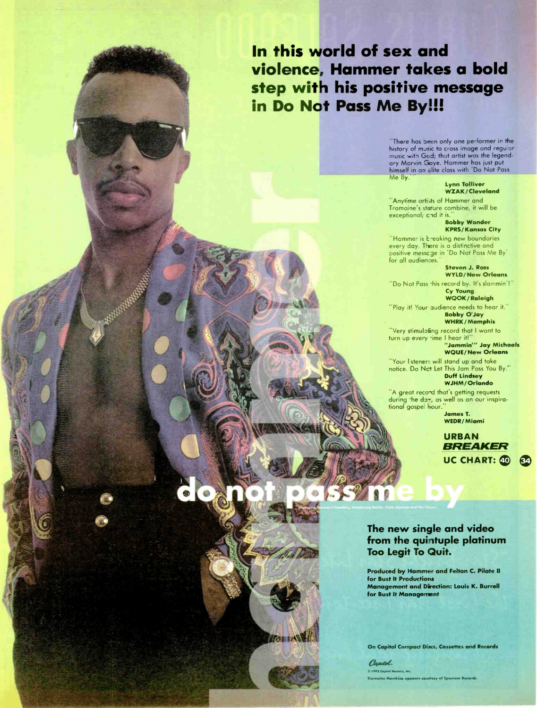
“With the last album I was dealing with music that was sampled. This time, 90 percent of the album is original songs; the exceptions are ‘Do Not Pass Me By,’ a traditional gospel hymn that dates back to the 1800s, and ‘Why Can’t We Live Together,’ the 1973 hit by Timmy Thomas. I felt it was time for people to see another side of me,” Hammer explained to an industry trade. “I want this album to be the one that ends the narrow thinking that rap is one-dimensional. When people think of Hammer. I want them to think of music.”
Hammer‘s music on “Too Legit To Quit” was desired to inspire, uplift and pass on a positive message in the same way that his favorite writers had done in the past. “‘Too Legit To Quit’ is more than a dance album. It’s a ’90s version of [Marvin Gaye’s landmark 1971 album]’What’s Going On.’”
“In terms of lyrical themes, I knew I wanted to address certain issues that are very important, particularly in my community, as well as love and relationships, and with racism at an all-time high, racial prejudice. ‘Why Can’t We Live Together’ is more applicable now than when it first came out in 1973.”
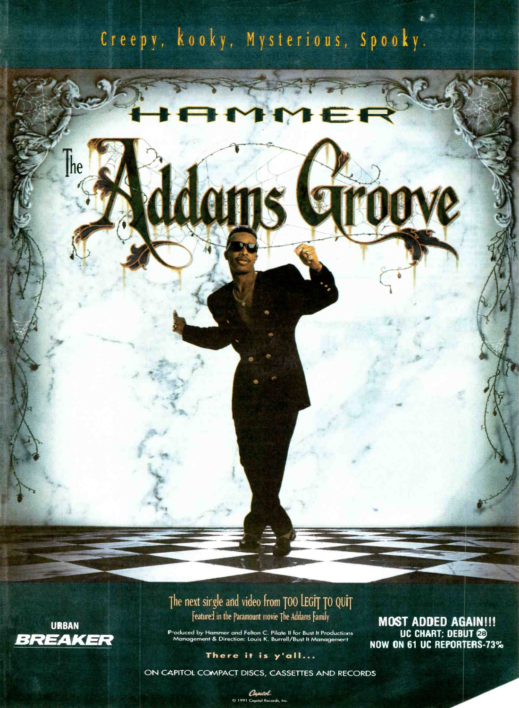
“My thoughts about the condition of our world and our society are reflected in this album. My success has helped open my eyes to the condition of our communities. It’s not about black or white; its about people,” Hammer notes in the message reprinted on the album.
As with his previous albums, Hammer worked with Felton Pilate, former member of the group Con-Funk-Shun who also served as Hammer‘s musical director on his global tours.
MC Hammer released the gold selling single “Adam’s Groove,” from “The Addams Family” in December of 1991. The single was the second single from “Too Legit to Quit“, and only featured on the cassette along with two more additional tracks.
“Do Not Pass Me By” featuring Tramaine Hawkins and the final single “This Is the Way We Roll” followed.
During that era a video was released, for the fan-favorite “Gaining Momentum,” featuring some hot footwork.
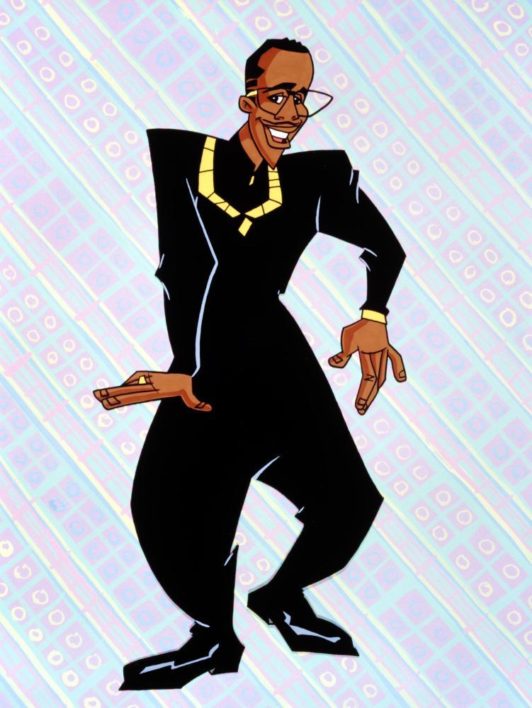
“Hammerman,” a Saturday morning cartoon based on the rapper, debuted September 7th, 1991 on ABC.
Mattel introduced two MC Hammer dolls into Barbie‘s “celebrity friend” line.
While a Pepsi commercial, featuring Hammer pitching soda over “2 Legit 2 Quit,” debuted on air in December 1991.
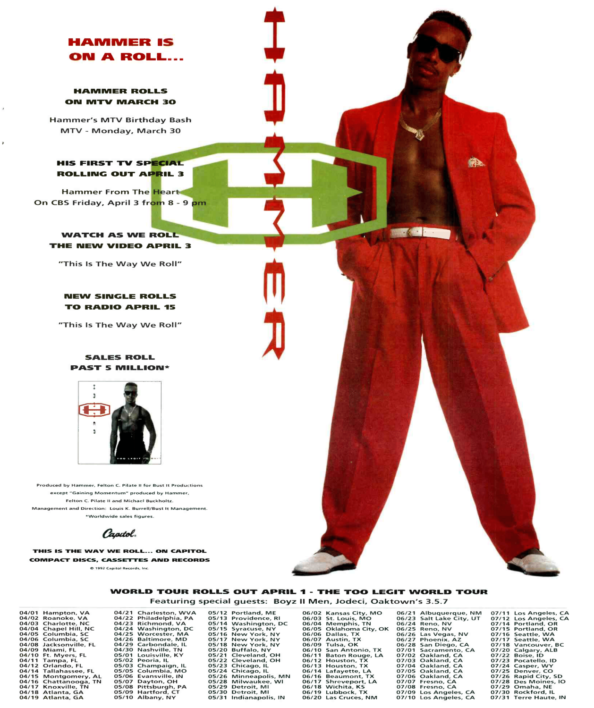
To top the era off MC Hammer Headlined a 100-city tour featuring Jodeci, Boyz II Men, and Oaktown’s 3.5.7.
“Too Legit To Quit,” would go on to sell over 5 million copies.


Take A Trip Down Memory Lane with “Too Legit To Quit!”




